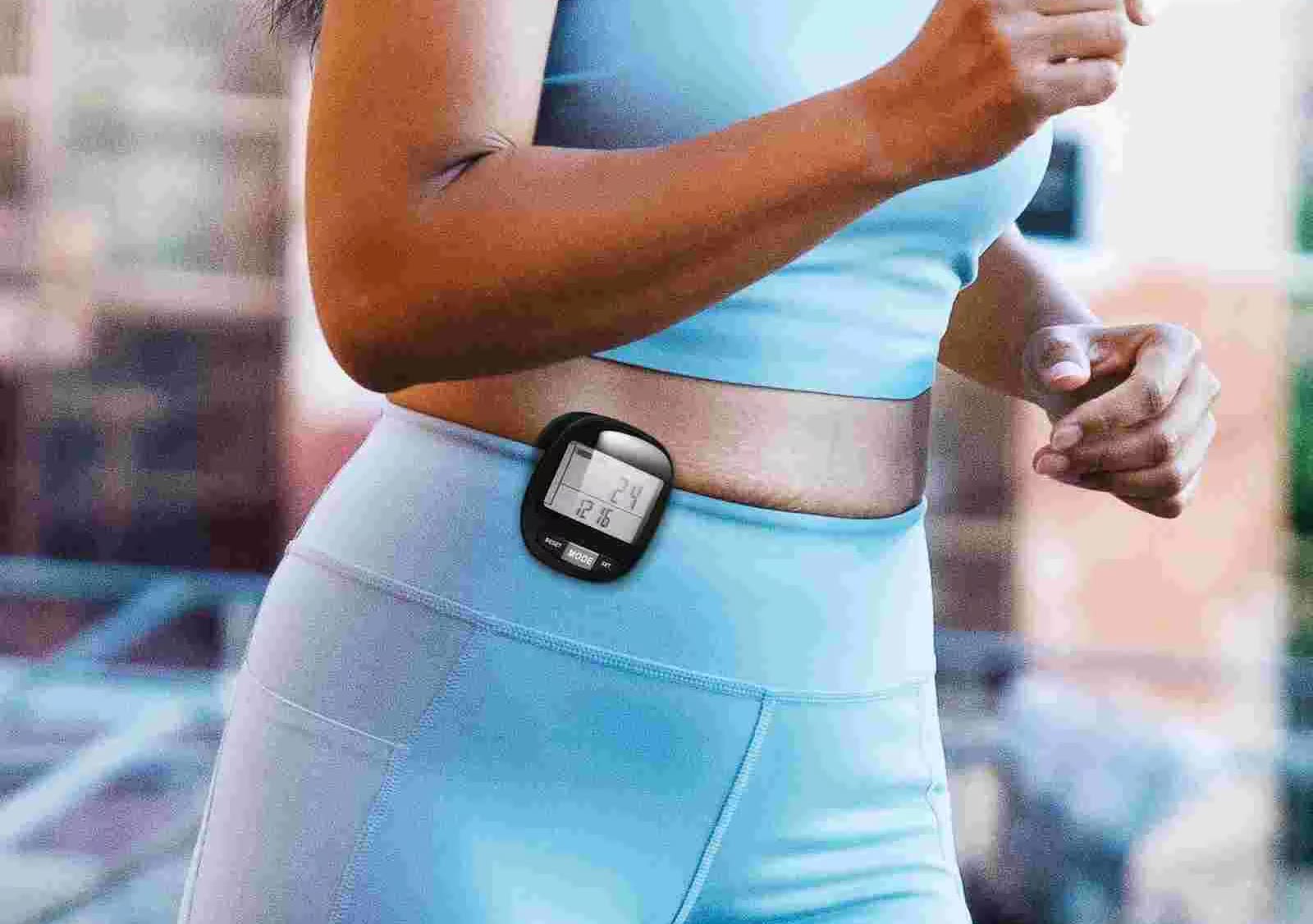

🚶♀️ Remember when you tried to mentally count your steps during that morning walk, only to lose track after hitting 300? I certainly do! Tracking physical activity shouldn't feel like solving a math problem while exercising. Yet without proper tools, monitoring your daily movement becomes a frustrating guessing game.
Choosing the right pedometer can feel overwhelming with countless options flooding the market. From basic step counters to advanced fitness trackers with GPS and heart rate monitoring, the features vary dramatically—and so do the prices.
That's why I've created this comprehensive guide to the best 5 pedometers available today. After testing dozens of models and analyzing thousands of user reviews, I've identified the devices that deliver reliable step counting, user-friendly interfaces, and genuine value for your investment.
🔋 The nightmare of constantly charging yet another device? Gone. The anxiety of inaccurate step counts ruining your fitness goals? Eliminated. I once missed a monthly step challenge by 2,000 steps because my unreliable pedometer failed to register my afternoon walk—a mistake I don't want you to experience.
Whether you're a senior tracking daily activity, a fitness enthusiast monitoring training progress, or someone simply trying to be more active, this guide will help you find the perfect pedometer for your specific needs and budget.
Let's explore these game-changing devices that will transform how you track your daily movement—and potentially your health outcomes too! 💪
How precisely the pedometer counts steps and maintains consistent performance over time, even in challenging conditions.
Duration between charges or battery replacements, with preference for devices offering weeks or months of continuous operation.
Intuitive interface, readable display, and simple setup process that works well for users of all ages and tech comfort levels.
Value-adding capabilities beyond basic step counting, such as distance tracking, calorie estimation, and connectivity options.
The PacerTrad Pedometer stands head and shoulders above the competition as the undisputed champion in the step-tracking market for 2025. This remarkable device combines cutting-edge 3D sensor technology with exceptional simplicity, making it the perfect companion for fitness enthusiasts and casual walkers alike.
What immediately sets the PacerTrad apart is its extraordinary accuracy—it captures virtually every step with precision that rivals medical-grade equipment. The large, crystal-clear display makes viewing your progress effortless, even in bright sunlight or for those with vision challenges. 👀
The ingenious clip-on design offers versatility that many competitors lack. Whether attached to your belt, pocket, shoe, or bag, the PacerTrad maintains consistent tracking without the bulk of wrist-worn alternatives. Its lightweight construction (barely noticeable at just a few ounces) means you'll forget you're wearing it until you need to check your progress.
Battery life is where this pedometer truly shines compared to power-hungry smartwatches. While most fitness trackers require nightly charging, the PacerTrad operates continuously without needing a power source for extended periods. This reliability ensures you'll never miss counting a step due to a dead battery.
The 7-day memory function provides valuable insights into your weekly activity patterns, allowing you to identify trends and make meaningful adjustments to your routine. For seniors monitoring daily activity or fitness enthusiasts tracking training volume, this feature delivers actionable data without overwhelming complexity.
Perhaps most impressively, the PacerTrad achieves all this functionality while maintaining an intuitive, one-button operation system. No complicated menus, no confusing settings—just accurate, reliable step counting that works right out of the box. 🎯
Durability testing confirms this pedometer withstands the rigors of daily use, from unexpected rain showers to accidental drops. The sturdy plastic construction balances lightweight comfort with impressive resilience, making this a long-term investment in your health monitoring arsenal.
The Garmin Forerunner 55 represents a significant step up from basic pedometers, offering comprehensive fitness tracking capabilities within a dedicated running watch. While it excels as a training companion for serious runners, it also serves admirably as a sophisticated step counter for those seeking detailed activity metrics.
This GPS-enabled device delivers impressive accuracy when tracking steps, distance, and pace. The built-in heart rate monitor provides valuable cardiovascular data, though users should note this isn't a medical-grade device. What truly distinguishes the Forerunner 55 is its exceptional battery performance—up to two weeks in standard mode and 20 hours with continuous GPS tracking, far outperforming most smartwatches.
The PacePro feature stands out as particularly valuable for runners, offering GPS-based guidance for specific courses or distances. This advanced functionality, combined with race prediction capabilities and finish time estimates, makes the Forerunner 55 an excellent choice for those training for specific events or working toward performance goals.
Where the Garmin falls short of our top pick is in its learning curve and price point. The button-based interface requires some time to master, and the wealth of features can initially overwhelm casual users simply seeking step counts. Additionally, while the Forerunner 55 offers exceptional value for serious fitness enthusiasts, its premium price represents a significant investment compared to simpler pedometers.
The Omron Walking Style IV (HJ-325EW) strikes an excellent balance between simplicity and functionality, making it a solid mid-range option for those seeking reliable step tracking without excessive complexity. Omron's reputation for medical-grade accuracy shines through in this compact device.
This pedometer excels in its core function—counting steps with remarkable precision. The 3D sensor technology accurately detects genuine steps while filtering out random movements, providing reliable daily totals. The clean, easy-to-read display presents your data clearly, with a straightforward interface that requires minimal setup time.
Battery efficiency stands out as a significant advantage of the Omron Walking Style IV. Unlike power-hungry smartwatches, this dedicated pedometer operates for extended periods before requiring a battery change. This reliability ensures consistent tracking without the frustration of unexpected shutdowns.
Where the Omron model falls short of higher-ranked options is in its limited additional features. While it tracks steps, distance, and calories effectively, it lacks the advanced metrics and connectivity options found in more sophisticated devices. The absence of wireless syncing means manual recording for those wanting to maintain long-term activity logs.
The Garmin vívofit 4 occupies a unique position in the pedometer market, offering wrist-based step tracking with an extraordinary battery life that sets it apart from power-hungry smartwatches. This slim activity tracker delivers reliable performance without the hassle of frequent charging.
Battery performance is unquestionably the vívofit 4's standout feature—with an impressive 1+ year battery life from a standard coin cell battery, this device eliminates the charging anxiety that plagues most wearables. This longevity makes it particularly appealing for users who prioritize convenience and continuous tracking.
The always-on, customizable color display provides clear visibility of your daily stats without requiring button presses or wrist movements. The Move IQ feature automatically detects and categorizes different activities, offering a more comprehensive picture of your daily movement patterns beyond simple step counting.
Where the vívofit 4 falls short is in its limited display size and lack of built-in GPS or heart rate monitoring. The smaller screen can be challenging for users with vision impairments, and the absence of these advanced sensors restricts its utility for serious fitness enthusiasts seeking detailed workout metrics.
The POLAR Ignite 3 represents the premium end of our pedometer selection, offering comprehensive fitness tracking capabilities within a sophisticated smartwatch design. While it exceeds basic step counting by a considerable margin, its advanced features come with tradeoffs in simplicity and battery life.
This device shines with its vibrant AMOLED touchscreen display, providing exceptional visibility and intuitive touch controls. The dual-frequency GPS delivers precise location tracking for outdoor activities, while the optical heart rate sensor offers continuous cardiovascular monitoring. These advanced sensors make the Ignite 3 particularly valuable for serious fitness enthusiasts seeking detailed workout analytics.
The sleep tracking capabilities deserve special mention—the Nightly Recharge and SleepWise features provide comprehensive insights into recovery and energy levels, helping users optimize both exercise and rest periods. The FitSpark feature offers personalized workout suggestions based on recovery status, adding genuine value for those seeking structured fitness guidance.
However, these advanced features come at the cost of battery life and simplicity. The 30-hour battery life, while respectable for a full-featured smartwatch, requires more frequent charging than dedicated pedometers. The learning curve is also steeper, with multiple menus and settings to navigate before mastering the device's full capabilities.


PickExpertChoice offers insightful reviews based on thorough research, customer experiences, and product specifications. Although we don’t physically test all products, we focus on delivering accurate and reliable information. Please note that images are illustrative and may not exactly represent the product. We recommend conducting additional research to make the most informed purchase decisions.
© PickExpertChoice 2024 • All Rights Reserved